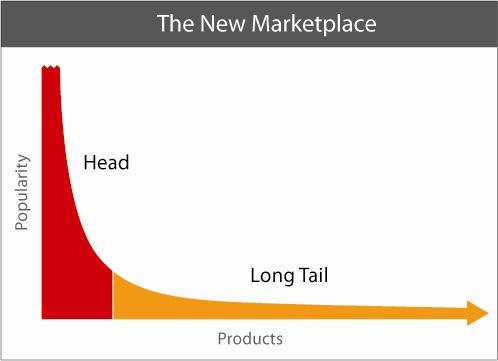Leap forward
Furniture design - WIP
Overview
Seed - in steel
Improvement is the seed of endeavour. 'Seed - in steel' represents the first in a line of furniture which can change it's form and spirit - just as you'd blueprint the Kingswood.
Designed and constructed on a strictly square configuration, the cuboid frame poses as tool, base component, model and sculpture. One stands alone as a sculpture, multiple units act as a system.
Proposition and production
Where things come from now
The supply chain in the 21st century is bound to become far more distributed than current supply chain topography. Driven by price, availability and development imperatives, new look supply chains may well be drawn from a more social network of communication and transaction. Producers have incredibly powerful resources at their disposal, resources which are only now coming online to address a more agile production capacity. 'SourceMap' is one such resource which is impacting the production landscape.
This example demonstrates the highly networked future of production, and offers significant opportunity for small production hubs to play a critical role in delivering new and innovative solutions.
Where things will come from
... millions of small user-generated creative outputs (for example, products purchased directly from artists, designers and makers via Etsy) rather than large production runs of “big hits” (or mass produced products controlled and marketed by large companies). This shift is being aided by technologies aimed at democratising production, such as domestic 3D printers, CNC machines and laser cutters, and is sparking the rise of microfactories, greater diversity and consequently greater consumer choice.
Chris Anderson’s notion of the “long tail” refers specifically to the orange part of the sales chart above, which shows a standard demand curve that could apply to any industry, from entertainment to hard goods. The vertical axis is sales; the horizontal is products. The red part of the curve is the hits, which have dominated our markets and culture for most of the last century. The orange part is the non-hits, or niches, which is where the new growth is coming from now and in the future.
While a dramatic shift economies of scale to scope means we stand to lose a wealth of knowledge, skills and infrastructure in mass production, it also opens a space for new innovation. 'More with less: Aussie innovation and the future of car design', by Mark Richardson, Lecturer in Industrial Design at Monash University
Designers, thinkers, retirees, teachers, children - everyone will have access to home office production capabilities in the future. The look and feel of the production environment can be tailored to suit the domestic realm without compromising quality of output. In fact, the closer the production facility is to the family realm, the greater the opportunity to develop appropriate and necessary artefacts.
Innovation hubs are popular these days because they empower collaborative thinking. The home kitchen is fundamentally the hub of many households, and plays an important role in the daily lives of the people communing in that area. It's not a stretch to propose that this area poses significant opportunities to develop collaborative thinking practices right at the heart of the home.
Taking this premise further, the emergence of making communities combined with new technology such as 3D printing begs the obvious question - "How long before the domestic household is adorned with affordable production capabilities? The traditional industrial aesthetic has held back such production environments outside the typical production precincts, until now. 3D printers are by their nature relatively clean, quiet and safe production tools. The software at the core of these technologies is already available to anyone interested in CAD, CAM and DIY electonics and programming. Hence, each computer, no mattr where it sits, is capable of driving such production tools. So the answer to the question above is clearly "soon - very soon!"
The resemblance to existing homewares and whitegoods will naturally evolve as hardware manufacturers compete within niche markets. The examples below clearly demonstrate this phenomenon is happenning already.
Domestic Production Platforms
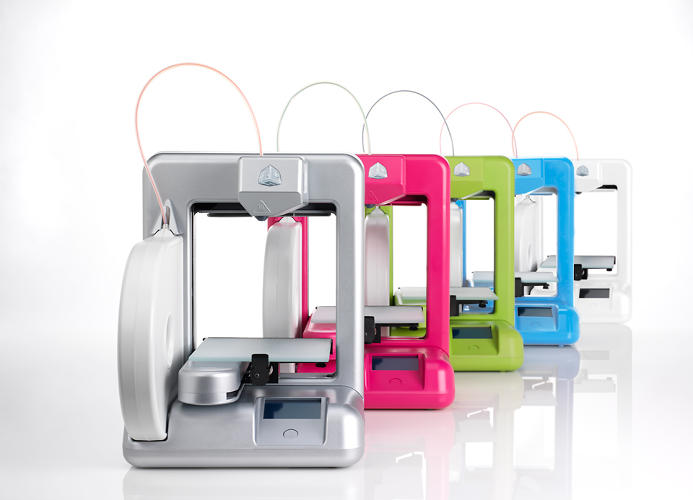
The Cube
Cubify’s second generation desktop 3-D printer, as marketed by 3D Systems
.JPG)
Brother Innov-is NV5000
The Brother Innov-is 5000 Laura Ashley Limited Edition Machine. As the spiel goes - 'The colour LCD touch screen with powerful design, editing and help features are clear and user-friendly, helping you to turn those ideas into reality, quickly and effortlessly, with a professional high quality finish.'
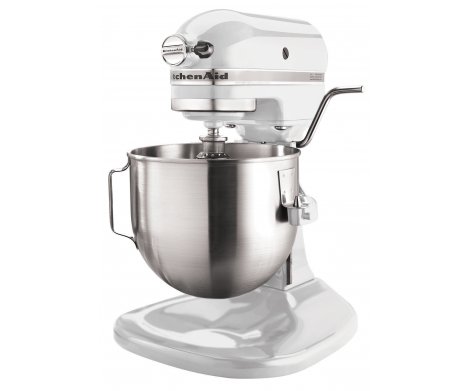
KitchenAid KPM5 Bowl Lift Mixer
Pretty much the domestic godess' kitchen tool of choice by KitchenAid
At present these systems are designed as commercial or small enthusiast models. This project hopes to explore the new function of production capability within the home environment. As a starting point, a range of related technologies is illustrated below, and will grow over time. Ultimately we hope to put together a feasible proposition which empowers the homebound creative to design and build products which are specific to the creator's own needs. Whether that be 3D printing, CAD machining or controlling textile production is unpredictable, and necessarily so.
Systems of engagement
Here's a sample of dynamic systems which are attracting attention and experimentation around the world.
The Fletcher Capstan Table explores artefact engagement
The Stewart Platform - 6 DOF Parallel kinematic industrial robots
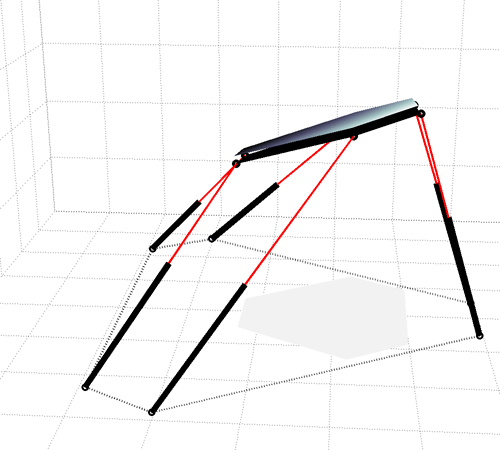
Mar 29, 2010
Fanuc F200i parallel kinematic robot. Hexapod construction enables very good accuracy and stiffness. Robot is used for machining and laser processing at Department of Production Engineering, Tampere University of Technology.
Rostock delta robot 3D printer prototype
Dial indicator shows vertical accuracy, currently within 0.01 inch / 0.25 mm.
Six-Axis Joystick (Stewart Platform) for Animatronics
On the Left is the SLAVE and on the Right is the MASTER
SPFX 6 DOF Motion Base 40x40 weight tests
Various load tests of a 40' x 40' on the Tricky Guy 60" 6 DOF Motion Base.
Reference
Mockups, Prototypes and reference systems for a speculative home based production infrastructure
These systems might include:
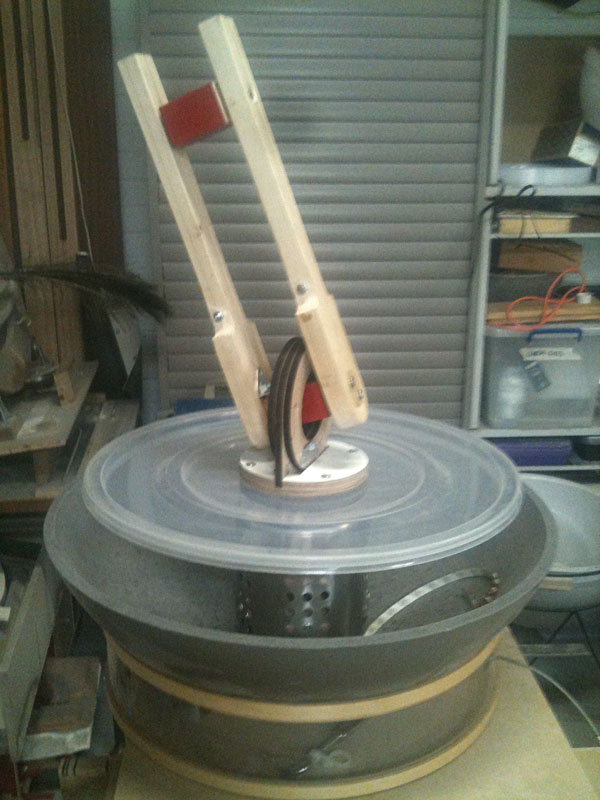
Mock-up showing foot detail
This experimental prototype explores the universal joint - a key engineering devie common to the Stewart Platform.
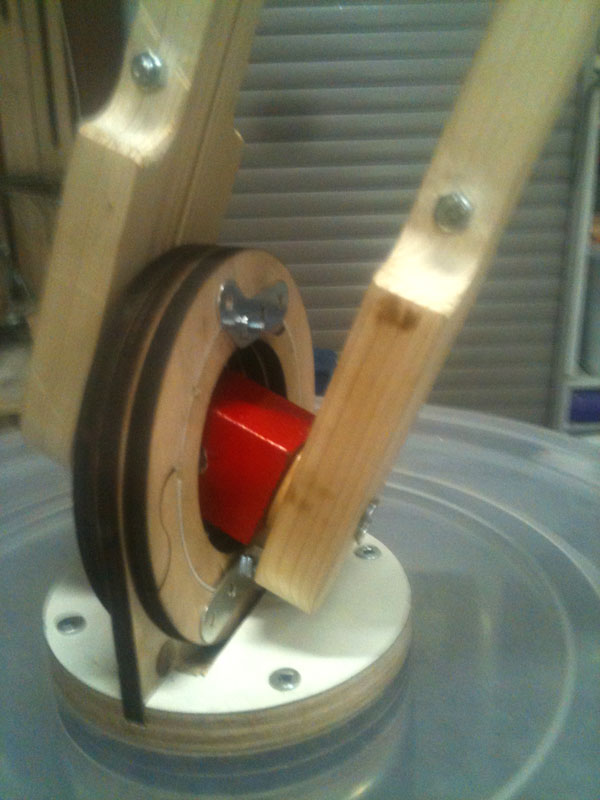
Foot detail close-up
Plywood rings indicate bearing components.
1200mm x 2400mm bed area
Footing pads
Gripper feet
Dynamic load bearing design
The build platform
500mm x 500mm x 250mm volume
Stewart Platform hexapod struts to lock into 500mm x 500mm square foundation grid
Walk capability across the foundation
Master / slave actuation
CNC driven actuation
Dynamic load bearing design
The picking / placing platform
The build component modules
The retrofit capability
Stewart Platform case study
Simple Master / Slave actuation dynamics
The Ben Heck Show - Build a Portable CNC Router for Fun and Profit
Machine, Pick & Pack
The Universal Joint
Provides reach, drive and flexibility within a simple component system.
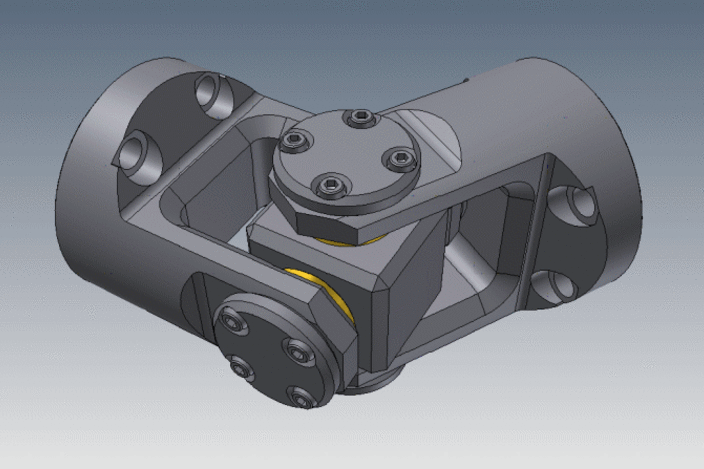
The animation above illustrates the fundamental geometry of a typical universal joint.
The gripper design
Provides picking and clamping capability
Componentry
This area is a work in progress.
The components to come are to be produced using a self replicating production model.
